Choice of kitchen caddy
5 and 7 litre plastic caddies
Newspaper, cardboard or shredded paper can be used to line the bottom of the caddy
When home composting you are in control of the process and the methods used. You may choose to collect your kitchen waste in an old ice-cream container, plastic take-away container or to buy a kitchen caddy. ( There is some additional information at Composting methods ). We need to consider the type of caddy being used as this will influence the choice of bag or whether a bag is used.
There are numerous low cost kitchen caddies available, as well as quite expensive “designer” and metal ones. The simplest plastic caddies have an airtight lid and solid sides; some have the addition of a filter while others have open ventilated sides.
Whichever style you choose it is better to opt for a size of bin that will require emptying every day or two rather than a larger size that holds more waste and make be emptied less regularly with the result that the waste starts to decompose, produce leachate and smell while in the kitchen. Leaving the waste in the kitchen caddy for longer periods may also allow time for fruit flies to hatch.
When home composting kitchen caddies with an airtight lid and solid sides can be used without the need for a compostable collection bag. The waste can simply be emptied directly into the compost bin or wormery and then washed by hand or by putting it in the dishwasher when it is next being run. This is more environmentally friendly than using a caddy liner.
I personally use a couple of folded sheets of newspaper in the bottom of the caddy to absorb some of the liquid waste and to make emptying easier. Others use cardboard or shredded paper while some prefer to wrap their food waste in newspaper to keep the caddy clean(ish) and reduce any smells
Those who use ventilated basket style kitchen caddies, which allow the food waste to lose some moisture by evaporation, will always need to use compostable bag liners. For this reason I do not favour this style of caddy when home composting.
Caddie and Kerbside Food Waste Collection
However if you are taking advantage of a Council kerbside collection system you will be required to follow their procedures and the ventilated caddy with a liner is increasingly becoming the method of choice.
When transporting material by road journey weight is an issue especially if it is being weighed at the end of the journey. The weight loss by evaporation in a ventilated caddy can be as much as 30% in the few days it is waiting for collection. Evaporation and airflow through a ventilated caddy has additional advantage of reducing the likelihood of the material starting to decompose anaerobicaly and reduces the risk of unpleasant odours. In addition, the condensate that can accumulate at the bottom of traditional closed caddies is avoided. This system also offers the additional convenience to the householder in that the caddy will not need to be washed after each use.
Containing the food waste in compostable bags also offers advantages across the collection, transport and composting systems and one council has estimated that the use of compostable bags for the food waste was twice as efficient as the next best food collection scheme, which did not use bags.
Compostable Paper Bags
Kraft paper bags are used by many to keep their caddies clean and to make it easier to dispose of the waste as the full paper bag can be lifted from the caddy and put in the compost bin. Of course this advantage is lost if the contents have to be shared amongst two or more bins or wormeries. Kraft paper bags are available in sizes to fit most kitchen caddies, whether they are in commercial or domestic kitchens, or can stand independently on the kitchen work surface. Although the bags have superior wet strength to assist in retaining moisture, the paper used is designed to break down within 112 days, so enabling composting or biodegradation when the waste is disposed of.
The paper liners may be made from the shavings from trees used in the timber industry and are 100% Biodegradable & Compostable
Like the better plastic bags the paper they can "breathe", reducing odour, leachate and weight, unlike bio-plastics
Waterproofed paper is used to reduce leakage. However, it is not recommended to put very wet waste in the bag
Paper bags will provide a small extra source of carbon in the compost bin and will decompose readily. One might assume that a paper liner is more environmentally friendly than plastic but it takes more than four times as much energy to manufacture a paper bag as it does to manufacture a plastic bag. Paper bags also generate 70% more air and 50 times more water pollutants than plastic bags according to a Comparison of Environmental Impact of Plastic, Paper and Cloth Bags
Research and Library Service Briefing by Kirsty Bell and Suzie Cave .(http://www.niassembly.gov.uk/globalassets/documents/raise/publications/2011/environment/3611.pdf)
Plastic Bags: Biodegradable and Compostable
Conventional plastic bags degrade (break down) in landfill sites very slowly, possibly taking decades with the contents of the bag taking even longer to fully degrade, if at all. Consequently, there is a demand for more environmentally friendly plastic bags and this has resulted in the production of Biodegradable and Compostable bags. There is often confusion between the two types
Biodegradable bags
Degradable bags
During the process of degradation, the large molecules in the plastic bag are broken down into smaller molecules usually incorporating oxygen. This oxidative degradation, normally initiated by exposure to UV light or heat, results in the plastic becoming weak and brittle. These material normally take longer to break down into carbon dioxide, biomass and water than biodegradable products. The degradation process ends in biodegradable action when the degrading plastics have been broken down into molecules so small that they can be consumed by microorganisms. So degradable means the “entire product or package will completely break down and return to nature within a “reasonably short period of time after customary disposal.”
Biodegrdable bags
Biodegradable Plastic is defined by the American Standard for Testing Materials (ASTM) as “a degradable plastic in which the degradation results from the action of naturally-occurring micro-organisms such as bacteria, fungi, and algae." [ASTM D883-99]
While bags classified, as Biodegradable will be degraded more quickly than degradable bags eventually they will still take much longer to decompose than the composting process so are of no value to composters .Not all biodegradable materials or products will be compostable as the time needed from them to biodegrade may be outside that of industrial or home compostable criteria. The “reasonably short period of time” for complete decomposition of solid waste products varies, the US FTC suggest one year in the UK the test period is 6 months.
Compostable bags
"Compostable" bags are those that can be decomposed by aerobic bacteria at a compost site until it cannot be distinguished from the other compostable material. This process should be completed at the same rate as the other compostable materials.
Officially as the product of the decomposition of compostable plastic bags will contain inorganic compounds it is not classified as pure compost or humus. There are two main types of compostable bag based on polyethylenethat meet the European standard (EN13432) for composting. These should degrade at least 60% within 180 days.
In most cases the term “compostable” bags applies to industrial compost facilities as they have been designed not for home composting systems and temperatures. They are designed toy degrade during an industrial composting process which exceeds a minimum temperature of 55°C the Composting Association Standards for Composts.
A Power Point presentation of signage may be downloaded from this page
The plastic bags of choice for home composting are Starch or Biobased (Hydrodegradable) made using corn (maize), potatoes or wheat. These have a limited shelf life but if stored in cool, dark, dry conditions should have a shelf life of approximately 18 months. Provided the right gauge of bag is used for the type and volume of compostable material with which it is to be filled the likelihood of the bag splitting is now small due to improvements in the strength and degradability of compostable bags for household use.
However, there are bags that are designed to meet the European home compost standards. These should completely degrade in 90 days in a compost bin that maintains a minimum temperature of 45°C. Some are claimed to degrade in as little as 10-45 days depending the composting system used. The bags carrying the home composting label have been tested at ambient temperatures (20 -30) for up to 26 weeks mimicing the temperatures in a home cold composting bin.
Please note that in the results in your home composting bin may be different and the bags may not breakdown easily. A Garden Organic members experiment, reported in The Organic Way 217 Spring summer 2017, showed that "home compostable" compost caddy bags made from plant based film showed a high degree of varibility when home composted with only 26% completetly degraded after a year in the compost heap.
It is unfortuately the case that if these bags are used in a cold system, you can expect to find them stuck on the prongs of your fork or the end of our compost aerator for some considerable time. No clear colleration was found between the type of compost heap or the heap temperature and degraration.
A correctly operated hot composting system, where the temperature is maintained at 45C or above should be able to deal with the bags that are made to meet this standard.
Compostable bags will decompose in a home hot composting system, indeed Hotbin (http://hotbincompostingblog.com/tag/compostable-bags/) found that at 60 C they broke down within 30 days. The bags are breathable bags and the the contents e.g. waste food may have composted before the bag is degraded. But there is still a problem when using them as the plastic bags reduces the airflow and oxygen available to the microorganism within the bag resulting in a risk the food being decomposed anaerobically until the bag itself has disintegrated. This takes about 10 days in a Hotbin. If a high proportion of the food waste, is added to the compost bin in such bags the anaerobic contents may create an impervious layer similar to that which would occur if a quantity of grass were added without mixing an adequate supply of “browns”. This will result in a cooling of the bin, anaerobic contents and the job of emptying and remixing the contents.
It is recommended in the Garden Organic Book of Compost (New Holland Publishers (UK) 2011 that the contents of the plastic liner are emptied into the bin and the now empty compostable bag is added separately.
The bag will now decompose without affecting aeration of the whole bin. However, while you have a clean caddy as a result of using the bag, it will mean that you probably have the waste all over your hands
Recycling symbols (part 1)
Power Point Presentation
Resource and waste management
Recycling symbols part 2 Composting
Power Point presentation
Composting and environmental symbols
The UCL Big Compost Experiment
There is still time to take part in UCLs nationwide citizen science research experiment in compostable and biodegradable plastic and to help shape the future of the planet
UCL would like you to help investigate the role and effectiveness of biodegradable and compostable packaging. The survey is well underway but there is still time to take part. The first part of the experiment is a short 5 minute survey: UCL would like to know what you think of biodegradable plastics, what you do with them, and if you ever compost them yourself.
The second part is optional for those who compost. It’s a home composting experiment. In which you are asked to place a few biodegradable plastic items in your compost under controlled conditions, and then report back about whether they compost or not.
By taking part in the experiment, you will be helping to determine the viability of biodegradable and compostable plastics. The data collected from you will feed into a Live Composting Map, a live map of home composting activities across the UK, and, with your consent, you will kept up-to-date with the project as it develops. However, you also have the option to
remain anonymous.
This is one of a series of research initiatives currently being undertaken as part of UCL’s Plastic Waste Innovation Hub, jointly funded by UK Research and
Innovation (UKRI) and the Engineering and Physical Sciences Research Council (EPSRC)
For more details go to https://www.bigcompostexperiment.org.uk/
Compostable bag experiment
This month I am hoping to be able to show, on the bolg, compostable bags decomposing before our eyes in my desk top See-Through Compost Container. I have taken samples of three compostable bags, two of which where wrappings round magazines while the third was a compostable garden refuse sack. The photos will also be published on this bage for ease of comparison.
Each sample has been stretched across an 10cm special design plastic frame ( the lid and top 2com of a yoghourt pot) so that any decomposition can be observed.
The compost materials will be mixed before being added to the “ mini bins” and will be moisten once mixed. The materials will be removed occasional to be topped up, remixed and moistened. Th Photos will be regularly posted on this blog with the full set being shown on the Compostable bag page of http://www.carryoncomposting.com/416920209 ( link from this blog Compostable Bags)
Tabletop Composting: Compostable bags after two months
I started composting samples of three compostable bags 2 months ago. The samples have been stretched across a plastic frame and cold composted using a three chambered See-Through Composting Container. As the chambers do no have drainage holes it is difficult to control the moisture level and on occasions over the composting period the containers have been wetter than I would have liked. I future the contents will be removed regularly, moisten and remixed and then returned to the chambers.
At two months the bag material is starting to breakdown on on one of the disks quite significantly. Photos taken earlier in the experiment can be seen by following the link http://www.carryoncomposting.com/416920209 and working down the page
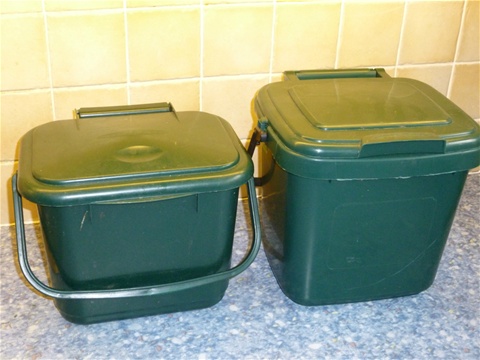
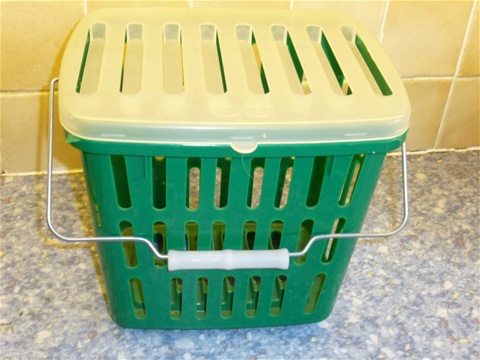
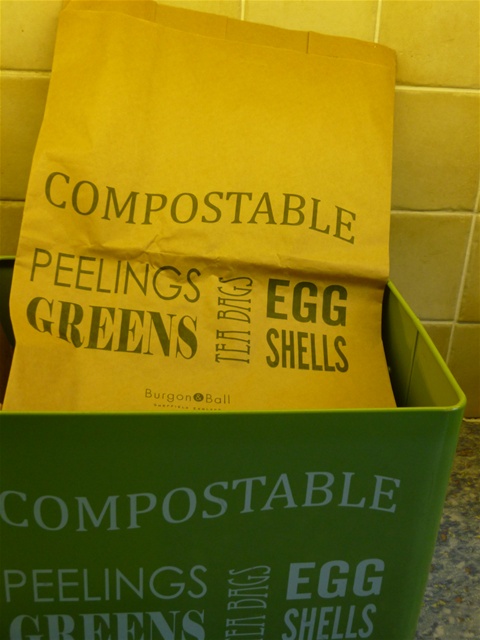

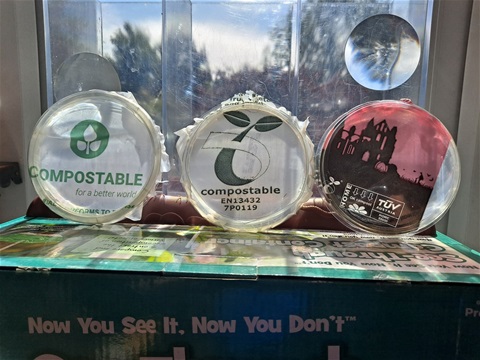
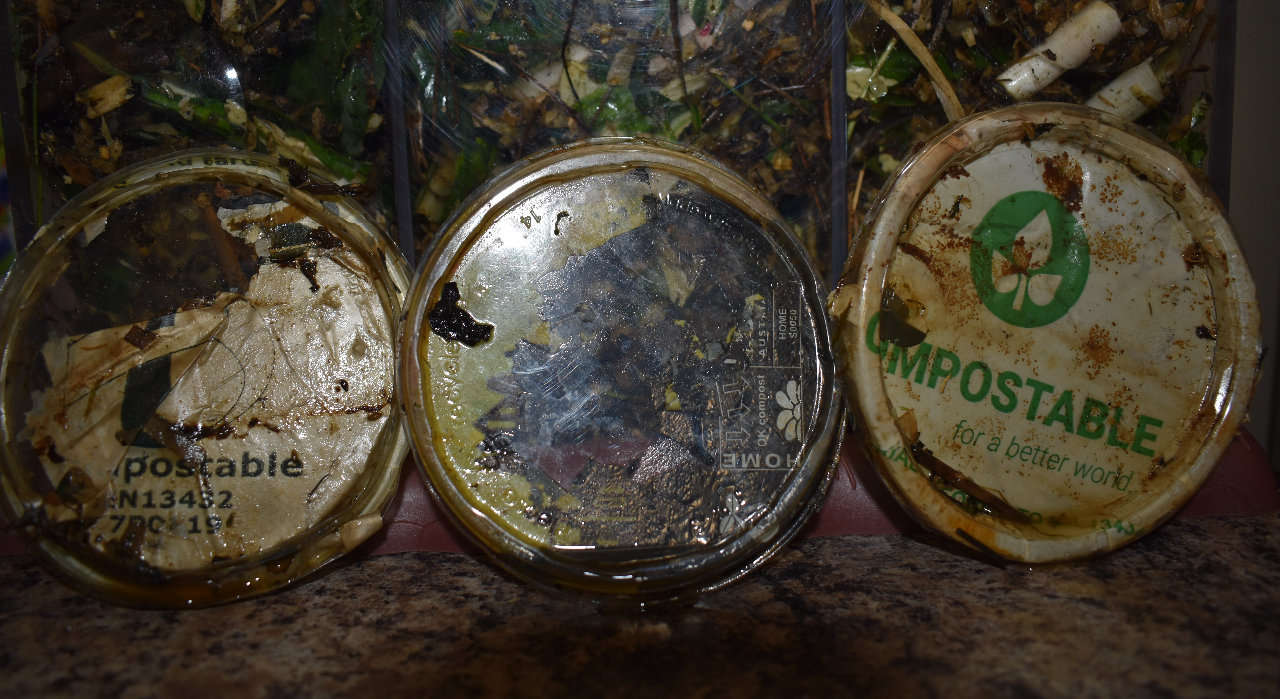
Tammy
Can't find any prices. I need adding 3 gallons. 10L should work. Pricing, shipping, quantity
Shrink Wrap
Thanks for sharing the best information and suggestions, I love your content, and they are very nice and very useful to us.
Shrink Wrap
There are many people who do not consider the use of paper bags but your blog specify the need clearly. Thanks for sharing it with us. Keep it up.
https://postage-solutions.co.uk/
Direct Compost
Great article.Thanks for sharing with us.